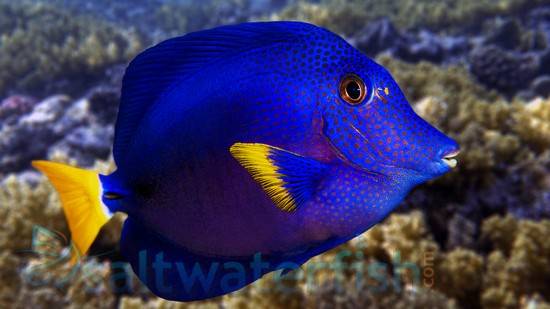The West Australia Dragonet (Synchiropus occidentalis) known to tropical fish keeping enthusiasts as the West Australian Mandarin Dragonet, or Occidentalis Dragonet is a rare subspecies of Synchiropus picturatus distributed from the Monte Bellos Islands northwards to the Timor Sea.
Synchiropus occidentalis‘ limited distribution Southeast of Elphik’s Knob, the northeastern end of Rosemary Island, Dampier Islands and its reclusive habits around Western Australia make sightings and captive specimens a rare event.
The West Australia dragonet is a peaceful, reclusive species that has been encountered alone, in pairs, and in at least one rare case interbreeding with Synchiropus picturatus in very shallow water no deeper than 7 feet.
The West Australia dragonet hide so deeply in the piles of rock ruble and among Acropora corals that they are seldom seen by divers or collectors, making them even a rarer aquisition by tropical fish keeping enthusiasts.
The West Australia Dragonet has an almost mustard green to orange yellow body color with large irregular dark psychedelia like spots edged in greenish blue, orange and black forming rings. They are distinguished by having numerous fine blue green to teal colored spots all over the body, including the dots within the rings, the black areas on the fins, and additional blue spots and greenish blue lines across the head.
Synchiropus occidentalis has two parallel diagonal white vertical stripes that run across each eye, similar to six-line wrasses.
The large target patterns on the Western Australia Mandarin Dragonet are a little larger and more irregular than its Indo-Pacific counterpart; with the line work turning to squiggles and spots.
The distinctive markings on their head makes them easily distinguishable from their congeners.
Although not much is known about Synchiropus occidentalis husbandry, they should have the same basic requirements that Synchiropus picturatus receive.
A single Occidentalis Dragonet can be housed in a mature 30 gallon FOWLR or reef tank with a thick live sand substrate and plenty of active live rock for them to feed on and hide among. It is believed that in order to keep a mated pair, if one could be obtained, at least a 60 gallon capacity tank packed with plenty of mature live rock for the fish to feed on and hide among is required.
Because the West Australia Dragonet lives naturally in moderately shallow currents; they require an oversized filtration system (10 to 20 times the tank volume) to provide current flow and strong oxygenation needed in their tank. Changing 20% to 30% of the water volume each month to keep Nitrate levels below 50mg/L is also recommended.
Mature live rock populated with copepods is an essential food source for Dragonets so at least 75 pounds of live rock is recommended to adequately feed a single individual.
When enough populated live rock is not provided to feed each individual, dragonets will often eat all the copepods on the rock and slowly starve to death.
The West Australia Dragonet in a FOWLR aquarium should get along well with other non aggressive species of similar size and temperament such as the Coral Beauty, Firefish, Pajama Cardinal, etc.
Because males are often slightly territorial, they should not be kept in groups with their own kind unless housed in very large tanks.
Synchiropus occidentalis are pelagic spawners that have not yet been bred in an aquarium environment, however, because they been observed interbreeding in at least one instance with Synchiropus picturatus, tropical fish keeping enthusiasts are eagerly awaiting the availability of a few pairs to breed them in the same manner.
The bad news is that due to the remote collecting location of the West Australia dragonet they may well cost upwards of one thousand dollars a piece by the time the handful of specimens reach our market.
The Western Australian Mandarin Dragonet feed throughout the day on small crustaceans and benthic invertebrates that they find in the substrate. Their mixed diet includes fish eggs, harpacticoid copepods, polychaete worms, small gastropods, gammaridean amphipods, and ostracods.
In an aquarium environment with adequate amounts of copepod populated live rock the should be acclimated to eating aquarium fare such as frozen copepods, vitamin enriched brine shrimp, cyclops, live black worms, and small Mysis shrimp. A turkey baster or syringe can be used to target feed small portions directly onto the live rock or near the fish several times a day.
Most successful tropical fish keeping enthusiasts cultivate robust populations of copepods to feed their Picturesque Dragonets by attaching a refugium to the sump in the tank. A mass of macroalgae such as chaetomorpha in the refugium allows the copepods to breed and multiply without being preyed on. Detritus and microfauna produced by the macroalgae provide shelter and food for the copepods. Robust copepod populations can also be cultivated by allowing the tank with ample live rock to mature for at least six months or so before adding fish.
The West Australia Dragonet (Synchiropus occidentalis) is an exceptionally rare dragonet species that is one of the hardest fish to find and catch. They are practically never available to tropical fish keeping enthusiasts due to its distribution being well outside typical collecting areas of marine ornamental fish. The total known area of collection is only 75 miles apart which is why they are so extremely rare and expensive.
Minimum Tank Size: 30 gallon (60 gallons for pairs)
Aquarium Type: Reef or FOLR
Care Level: Difficult
Temperament: Peaceful
Aquarium Hardiness: Hardy when acclimated
Water Conditions: 75-82° F, dKH 8 – 12°, pH 8.1–8.4, sg 1.023-1.025
Max size: 3″
Color Form: Blue, Black, Green, Orange,
Diet: Carnivore
Compatibility: Reef Safe
Origin: Monte Bellos Islands northwards to the Timor Sea
Family: Callionymidae
Lifespan: 5 – 15 years
Aquarist Experience Level: Expert





